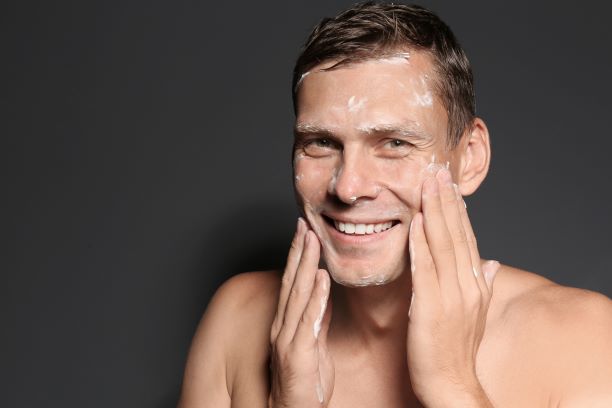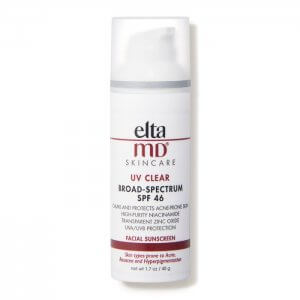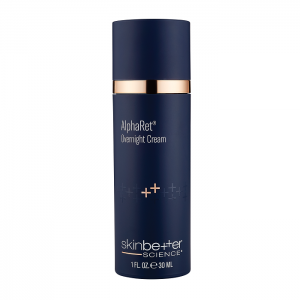Happy Father’s Day from U.S. Dermatology Partners! We know that dads have a lot on their plates. So, when it comes to skincare, we understand that men like to keep it simple! To deliver some easy-to-follow men’s skin care tips, we sat down with USDP dermatologists to talk about men’s skin health. U.S. Dermatology Partners physicians offer insights into men’s skin health for Father’s Day and all year long.
Men’s Skin Care – Fast Facts!
- According to the American Academy of Dermatology, men are more likely than women to develop the deadliest form of skin cancer – melanoma. After the age of 65, men are twice as likely as women to develop melanoma.
- Most skin care concerns with men revolve around hair growth. Learning how to properly shave and care for the skin before and after shaving can make a huge difference.
- Men are much less likely to wash their faces, perform regular self-exams, and visit a dermatologist for preventive screenings than women.
Basic Men’s Skin Care Tips
Taking care of your skin properly can save you a lot of headaches down the road, saving yourself from dealing with irritated skin, ingrown hairs, and other dermatologic issues. Below, we’ve detailed some basic sun protection, hygiene, and shaving tips to help men improve their skin health.
Sun Protection
Probably the most important work we do as dermatologists is the detection and treatment of skin cancers. In men, we often see skin cancers in areas that are less vulnerable in women: the top of the head and ears. When you proactively protect your skin from sun damage, you limit your risk for most forms of skin cancer, including melanoma. The foundation for good skin care includes daily usage of a broad-spectrum sunscreen that protects against both UVA and UVB rays. We recommend the use of sunscreen with an SPF of 30+ every morning on the face, neck, hands, and any area that will be exposed to sunlight. Using sunscreen can also help prevent the physical signs of aging, so you’ll look better too. Some other sun safety tips include:
- It’s important to reapply sunscreen every 2 hours during the day if you are out in the sun consistently.
- Lots of men wear baseball caps, which don’t cover the ears and neck where men are more prone to get burned. Make sure you are still using sunscreen even if you wear a hat.
- Use about a shot-glass full of sunscreen to cover the face and body when you’re going to be out in the sun swimming, working, or exercising. It may look like a lot of sunscreen, but this is truly the minimum amount.
Washing Your Face & Body
Men are much less likely to wash their faces on a daily basis, but it’s important to make time for this in your daily routine. Cetaphil makes a good line of cleansers that will work well for most skin types. If you suffer from dry skin, consider adding a simple inexpensive moisturizer (Cetaphil, CeraVe, Eucerin, and LaRoche-Posay are all good options). All the other stuff you read about – Vitamin C serums, alpha-hydroxy acids, beta-hydroxy acids – can help in the right patient, but if you want to keep things simple, find a sunscreen, retinol, and moisturizer that works well with your skin and call it a day.
Shaving
Whether you shave every day or once a year, take time to follow these simple tips to help you avoid painful bumps and razor burn:
- Shave when your skin is damp. A great time to shave your face is right after you take a shower when your skin is warm and clean. Excess oils and skin cells will be less likely to clog up razor blades and irritate your skin.
- Consider using a shaving brush to apply your shaving cream. A brush will lift up individual strands of hair, coating your hair and skin more evenly, reducing friction and limiting irritation.
- Let the shaving cream sit to soften hair, which minimizes tugging on hairs as you shave. While you wait, you can fix your hair or brush your teeth to maximize your time.
- Make sure you always shave in the direction that your hair grows naturally. Most people shave against their hair, which may seem effective, but it’s actually more likely to lead to ingrown hair and razor burn.
- Rinse your razor blade after each swipe and make sure to get new blades or disposable razors after 5 to 10 uses at most.
- Rinse your face with cold water after shaving. This is the ideal time to apply your moisturizer with SPF 30.
Tips for Handling Common Men’s Skin Care Concerns
When it comes to men’s skin health, our dermatologists often hear similar questions. We asked them to weigh in on some tips to handle men’s skin care concerns.
Men’s Skin Care Concern: What to do about “Turkey Neck”
Submental fat, often called a double chin or turkey neck, is a buildup of fat below the chin that can sometimes resemble the wattles that hang down below a turkey’s neck. Kybella is a non-invasive, injectable product that provides permanent fat reduction to the submental fat, and it is an FDA approved therapy. In addition to Kybella, which is a great treatment for dissolving the actual fat underneath the chin, ultrasound and radiofrequency-based devices can help with sagging and loose skin by giving an overall subtle tightening effect.
Men’s Skin Care Concern: Dealing with Hair Loss
If you’re starting to see a receding hairline or thinning at the crown, you might be surprised to hear that there are some great, minimally invasive options to help restore your lost hair. PRP, also called Platelet-Rich Plasma Therapy, can be quite beneficial for age-related hair loss particularly when combined with other modalities of treatment like finasteride (brand name Propecia) or Rogaine. There are some nutraceutical products like Viviscal Professional that can provide benefits as well. Keep in mind that, for most of these interventions, they need to be continued to see long-term results. A multiple angle defense against hair loss is highly recommended, but before any of that, we remind patients that hair loss can be complex. While genetic hair loss is the most common cause of thinning in men, there are other potential triggers. For that reason, we always recommend getting one baseline examination from a dermatologist before you try any over-the-counter remedies on your own.
Men’s Skin Care Concern: Handling Razor Bumps & Ingrown Hairs
In addition to following our shaving tips above, we have some recommendations for dealing with razor burn, bumps, and ingrown hairs. Razor bumps are a common occurrence in both men and women, but many male patients struggle with ingrown hairs on a daily basis. Everybody wants a close shave, but if you’re getting irritation, you may need to switch to a razor with fewer blades or a guard (Bump Fighter works well). If you continue to struggle, come in to see us or visit your local dermatologist. We can prescribe topical medications that can decrease irritation and lead to a smoother shaving experience.
Men’s Skin Care Concern: Dealing with Acne Scars, Wrinkles & Dark Spots
Most men prefer to keep their skincare regimen as simple as possible. The best anti-aging regimens involve two basic products: a good sunscreen and a topical retinol/retinoid. Retinoids are very important in promoting skin health at all stages of life. Topical retinoid, essentially a topical Vitamin A, has numerous benefits for the skin. Typically applied before bed, these products help improve acne, skin texture, blemishes, and reduce the appearance of fine lines and wrinkles because they tell your skin to produce new collagen. Although these results are not noticed overnight, they can be appreciated with long-term use.
How do I Know When it’s Time to See the Dermatologist?
This is one of the questions every dermatologist hears. If you’re ever in pain or your skin health affects your daily life, it’s time to visit a dermatologist. We recommend you schedule an appointment if you fit any of the following descriptions:
- You’ve seen lots of sun in your life (golfing, fishing) with or without sun protection, a baseline skin check is always a good idea.
- You run your hand over the top of your head and ears and feel rough, crusty skin, especially when the crusty spots are always in the same areas; this is often a sign of sun damage that needs to be addressed.
- You want to take a proactive approach to your skin health. Coming in sooner rather than later is always preferred. It’s much easier to be proactive and preventive than to wait until skin cancer has developed or you have large, painful areas of skin damage.
Get Help for Men’s Skin Care Issues with U.S. Dermatology Partners
If you’re interested in visiting for men’s skin care issues, we would love to see you. We have many locations nationwide, so take a few minutes to fill out our online form. A team member from the U.S. Dermatology Partners location nearest to you will be in touch soon to schedule your visit.
Find a location near me
or



